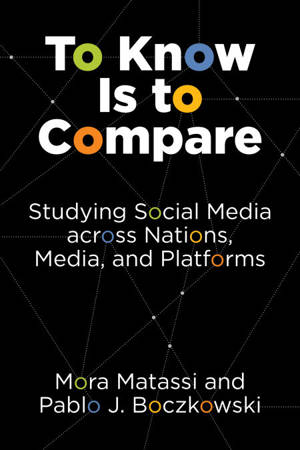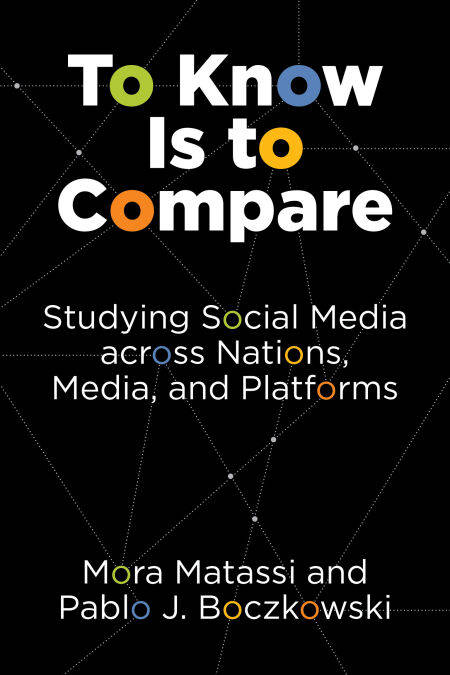
- Afhalen na 1 uur in een winkel met voorraad
- Gratis thuislevering in België vanaf € 30
- Ruim aanbod met 7 miljoen producten
- Afhalen na 1 uur in een winkel met voorraad
- Gratis thuislevering in België vanaf € 30
- Ruim aanbod met 7 miljoen producten
Zoeken
To Know Is to Compare E-BOOK
Studying Social Media across Nations, Media, and Platforms
Mora Matassi, Pablo J. Boczkowski
E-book | Engels
€ 39,42
+ 39 punten
Omschrijving
How systematic comparative research can unlock the potential of social media scholarship.
Though diverse and fruitful, social media scholarship too often focuses on single platforms in single countries, disconnected from other media that people use. Mora Matassi and Pablo J. Boczkowski’s alternative approach offers a framework based on the epistemological principle that everything we know emerges from comparing two or more entities. Drawing on a wealth of real-life cases, Matassi and Boczkowski examine key aspects of social media from three comparative dimensions (nations, media, and platforms) and two topics (history and language) to propose a blueprint that encourages researchers and lay readers alike to think about social media from new perspectives.
Matassi and Boczkowski illustrate their theoretical points with examples that link multiple media, illuminate an array of platforms, cover different countries and eras, and address various languages and both textual and non-textual signifiers. The result is an original conceptual account that allows for the study of social media in ways that are global, de-westernized, transmedia, and multiplatform. In addition, the authors review the major texts that use a comparative treatment and suggest topics, theories, and methods for engaging in comparative studies in the future.
Though diverse and fruitful, social media scholarship too often focuses on single platforms in single countries, disconnected from other media that people use. Mora Matassi and Pablo J. Boczkowski’s alternative approach offers a framework based on the epistemological principle that everything we know emerges from comparing two or more entities. Drawing on a wealth of real-life cases, Matassi and Boczkowski examine key aspects of social media from three comparative dimensions (nations, media, and platforms) and two topics (history and language) to propose a blueprint that encourages researchers and lay readers alike to think about social media from new perspectives.
Matassi and Boczkowski illustrate their theoretical points with examples that link multiple media, illuminate an array of platforms, cover different countries and eras, and address various languages and both textual and non-textual signifiers. The result is an original conceptual account that allows for the study of social media in ways that are global, de-westernized, transmedia, and multiplatform. In addition, the authors review the major texts that use a comparative treatment and suggest topics, theories, and methods for engaging in comparative studies in the future.
Specificaties
Betrokkenen
- Auteur(s):
- Uitgeverij:
Inhoud
- Aantal bladzijden:
- 224
- Taal:
- Engels
Eigenschappen
- Productcode (EAN):
- 9780262374989
- Verschijningsdatum:
- 17/04/2023
- Uitvoering:
- E-book
- Beveiligd met:
- Adobe DRM
- Formaat:
- ePub

Alleen bij Standaard Boekhandel
+ 39 punten op je klantenkaart van Standaard Boekhandel
Beoordelingen
We publiceren alleen reviews die voldoen aan de voorwaarden voor reviews. Bekijk onze voorwaarden voor reviews.








